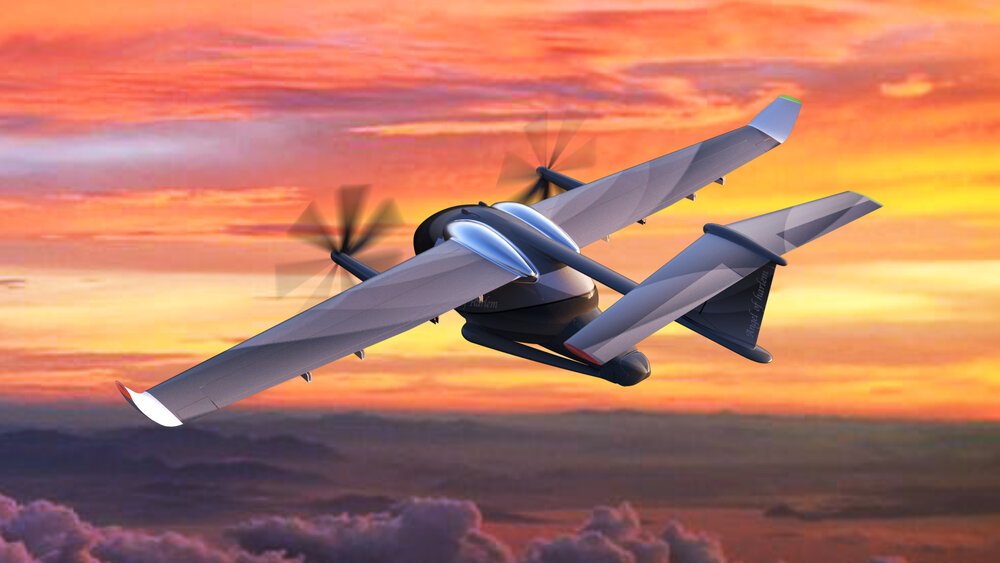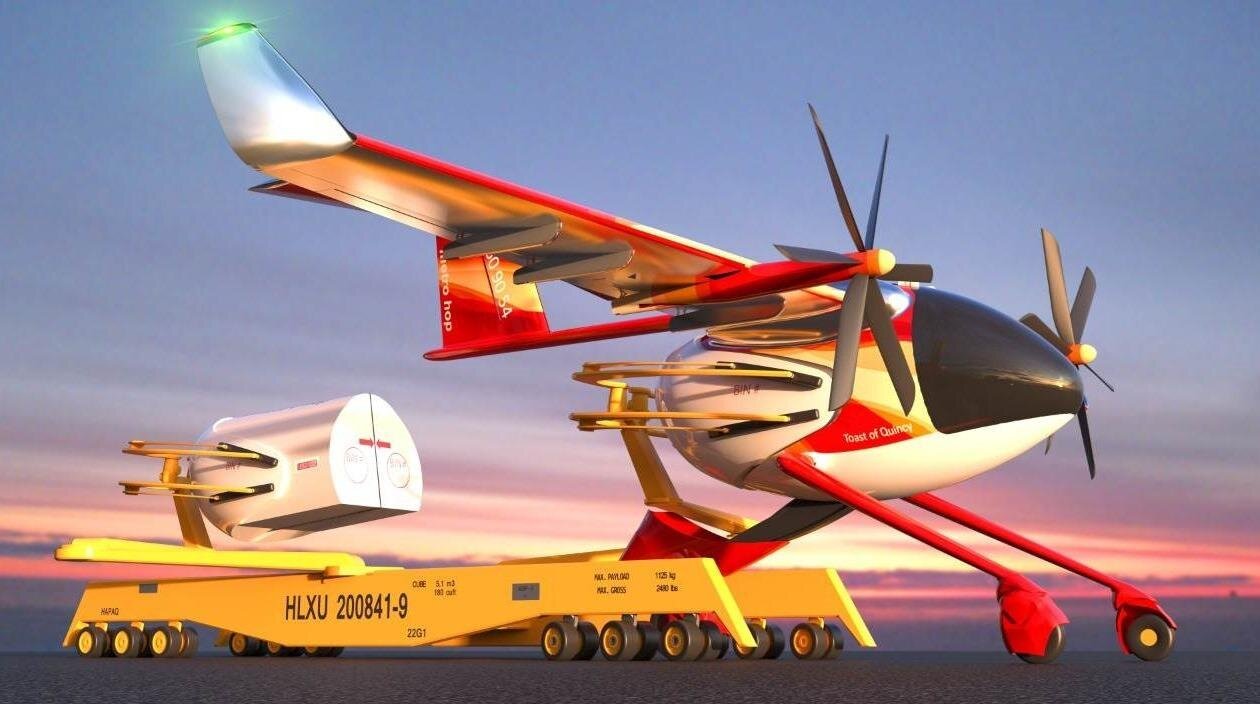Short takeoff and landing (STOL) might prove a practical alternative to VTOL in the early days of electric aviation. VTOL aircraft use an enormous amount of energy lifting themselves off the ground, dramatically cutting the range they can squeeze out of a battery system. But an STOL plane like the one Metro Hop is designing can get aloft much more efficiently, without needing a whole lot of runway.
This thing uses an active landing gear system, meaning that it doesn’t just rely on its propellers to get it up to takeoff speed. Instead, there’s an electric motor on at least one of the wheels to provide snappy and efficient acceleration on the ground. Combining hard acceleration with a large wing means the Metro Hop achieves takeoff speed fast – the company says its full-size prototype will allegedly get airborne in as little as 25 meters (82 ft).
The landing gear is also levered such that it can lift the body of the plane up and down, and tilt it rearward to maximize lift and drag in STOL situations. It folds out of the way once you’re airborne to reduce drag, enabling cruise speeds as high as 250 mph (400 km/h) while making efficient use of available energy to deliver a range up to 125 miles (200 km) with current battery technology.
And when it’s time to land, the extendable legs can help cushion the kind of brisk landing you can get when you’re trying to pull up quick.

Metro Hop
The company sees this system as an alternative to the eVTOL air taxi, and feels that STOL runways around 60 m (200 ft) long on top of skyscrapers could enable safe skyport-style passenger operations with a much lower energy cost than eVTOL vertiports.
Sure, maybe, but that cuts your options down a tad; a quick look at Google Maps suggests there are precious few tall buildings in our local CBD with a 60-m flat stretch on the roof. Even in Manhattan, or Seoul, or Tokyo, that’s a super-wide building. Maybe there’s scope on top of train stations and arenas and the like, if the flight paths around them are clear, but the eVTOLs will undoubtedly have more landing options.

Metro Hop
Another option is to use them for “middle-mile” cargo transport – a clean, fast, traffic-proof and potentially affordable way to get goods cross-town or between cities. Metro Hop has thought plenty about robotically-swapped cargo bins and battery pods which could keep these things in the air and working with the minimum possible downtime, but frankly such things are the least of the company’s concerns at this point.
As a relatively conventional winged airframe, the Metro Hop design may well see an easier path to certification than its eVTOL competitors. But it’s still got to get the cash together to develop and build the thing. A promising start on that front may come from the European Space Agency’s Business Incubation Center, which has given Metro Hop a modest grant including office space at the German Aerospace Center in Oberpfaffenhofen, business mentorship and enough money to build a “portable” 25-meter rubber roll-out runway long enough to launch the prototype from once it’s done.
Certainly an interesting aircraft. Check out a couple of videos below.
Metro Hop: The Urban Air Mobility Solution
Introducing Metro Hop Cargo
Source: Metro Hop
Source of Article